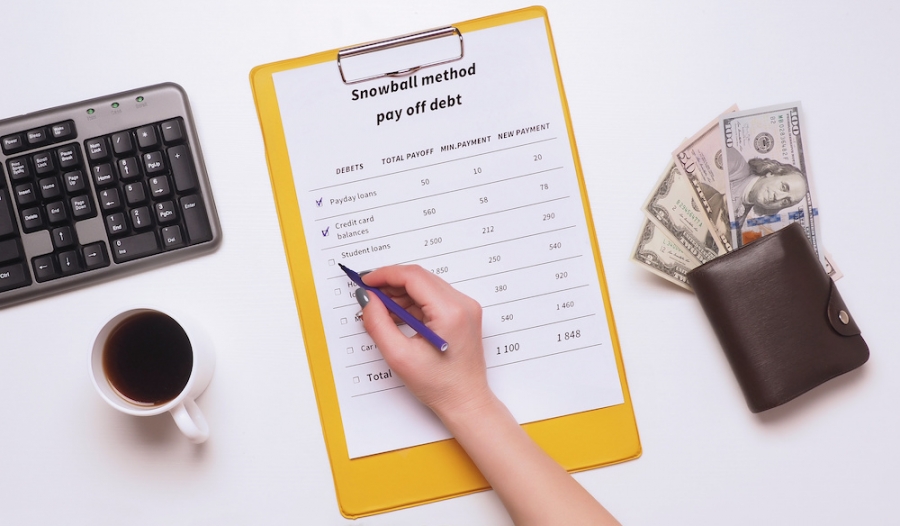When you’re getting ready to shop for a house, you need to be clear on your current financial situation and where you need to be, ideally before you start trying to work with lenders.
The amount of existing debt in your name will play a big role in whether you’re approved for a mortgage and how much house you can buy.
Paying off as much debt as you can before you start shopping for a home loan is critical, but it’s not an easy undertaking.
When you get ready to pay off debt, you might want to follow a method like the debt avalanche or the debt snowball. These are two popular methods to tackle debt, and they have a lot of similarities but a few differences, which we compare below.
The general idea of both the avalanche and snowball method is that you’re paying minimum payments on all your debt except the one your primarily focusing on at the time.
The Debt Avalanche
The debt avalanche method begins by figuring out the minimums you have to pay on all your debt, with the exclusion of your current mortgage if you have one. You’ll order your debts from the highest interest rates down to the lowest. Then, you’ll create a budget.
Your budget will show you how much more you can put toward debt every month to speed up your payoff.
Whatever the highest-interest rate debt is, it becomes your priority. If you have an extra $200 you can put toward debt, which you see after creating a budget, that money goes toward your highest interest debt each month until it’s paid off.
You keep moving down the list based on the highest interest rates, rolling your minimums into your extra payment amount until everything is repaid.
You have to be mindful of things like a promotional interest rate ending.
The avalanche method is a cheap, logical, and easy-to-follow path to getting rid of debt, but it can take a while.
The Snowball Method
With the snowball method, the underlying concept is the same, except you start paying off your debts with the one that has the smallest balance. You work your way up to the biggest balance, and you don’t consider interest rates in the order of repayment.
The snowball method works well for someone with a lot of little dispersed debt. You might be managing many minimum payments, and you can feel like you’re always paying bills, which gets discouraging.
When you start paying the smallest first, you can feel like you’re making some success as you chip away at them.
People find that, mentally, the snowball method works for them because it builds their confidence as they tackle increasingly large challenges throughout the process.
The Biggest Takeaway
Some people feel strongly about both methods and favor one over the other.
The avalanche method tends to be the most logical approach, while the snowball method is more emotional because it’s about little wins.
Regardless, the biggest takeaway is the same—you should choose one debt and put as much towards it as you can until it’s paid off. Pick whichever you want, but you’re creating a more manageable situation for yourself by choosing one.





